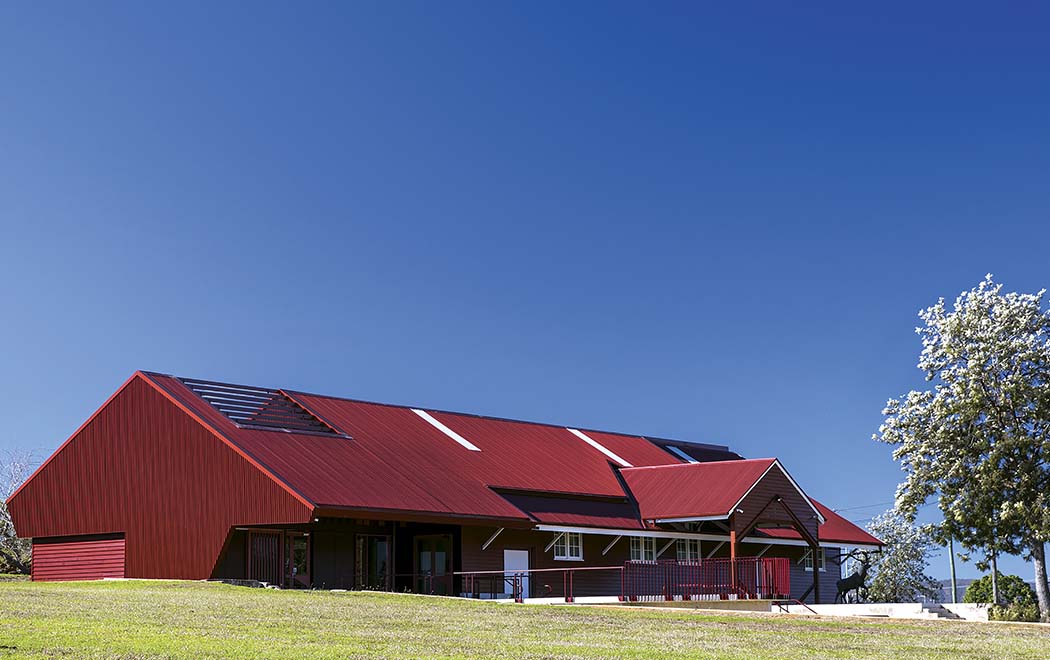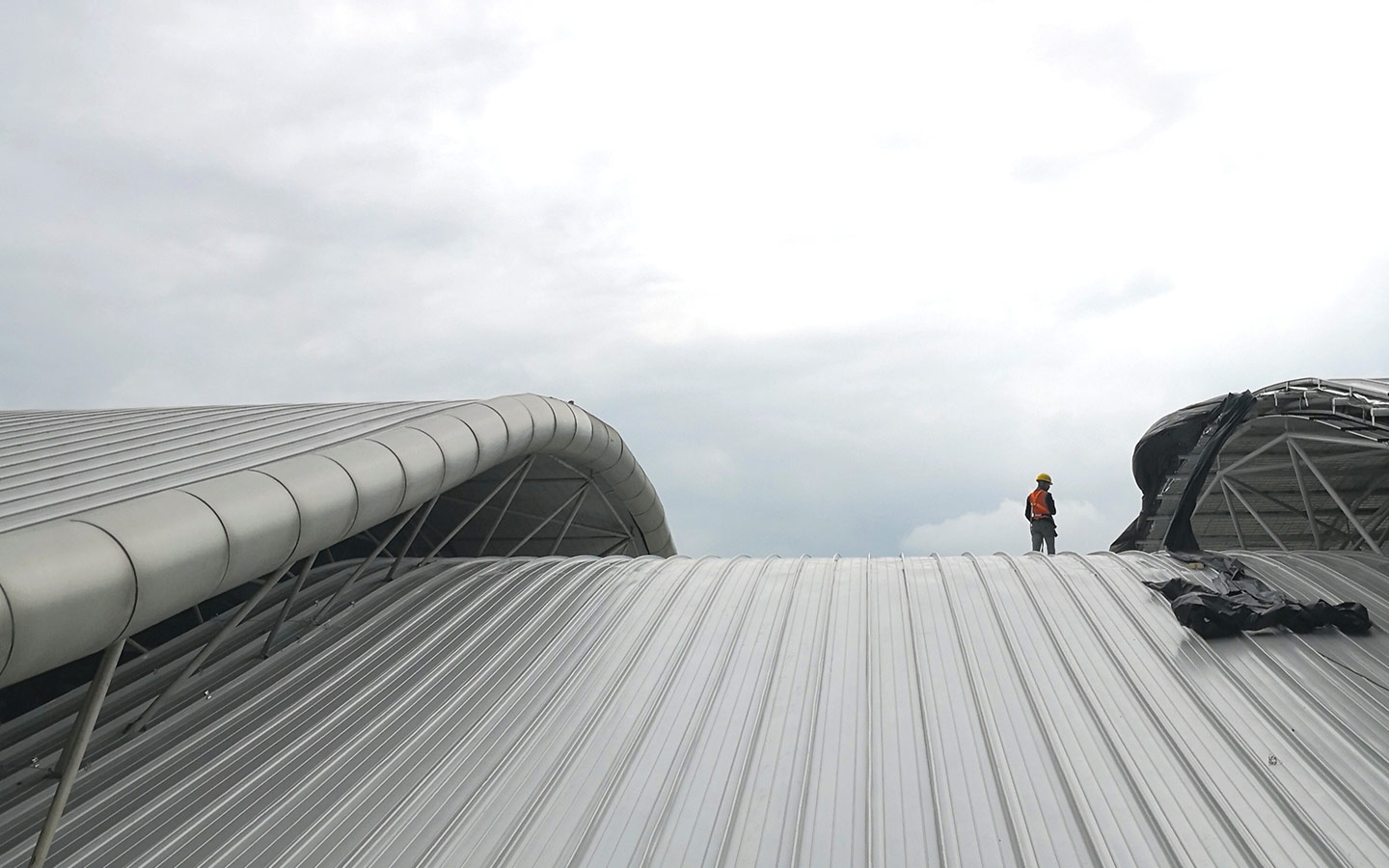17 Apr 2024
Get to Know The Characteristics of Vernacular Architecture
Get to Know The Characteristics of Vernacular Architecture
Share:
The uniqueness of vernacular architecture is not only reflected in its visual appearance, but also in the philosophy and values contained within it. Vernacular architecture depicts how humans adapt to their environment by utilizing the natural resources available around them.
What is Vernacular Architecture?
The term "vernacular" originates from the Latin word vernaculus, which means local, domestic, or native. Referring to the translation of this word, vernacular architecture can be interpreted as a style of building created by the indigenous inhabitants of an area, utilizing techniques and building materials available in their surrounding environment.
Different from contemporary architecture which usually involves architects, vernacular architectural structures are designed without professional intervention. This makes this architectural style so unique and authentic. This is inseparable from the development of vernacular architecture based on local experiences and wisdom without being influenced by global architectural styles or trends.
Nevertheless, there are some architects who adopt the principles of vernacular architecture in their designs. As a result, the works created appear more relevant to contemporary needs while still respecting the local identity and culture. This is what is referred to as neo-vernacular architecture.
Neo vernacular architecture according to experts is an approach in architecture that adopts or reinterprets elements of vernacular architecture in a modern context.
In neo-vernacular architecture, elements such as the use of traditional building materials, adaptation to local environmental conditions, and emphasis on cultural identity are often preserved or updated in a manner that accommodates modern technology and needs. This can include the use of modern construction technology or the integration of more contemporary design elements with traditional vernacular aesthetics.
Characteristics of Vernacular Architecture
The vernacular architecture style not only exhibits visual beauty but also portrays the identity and life of the community within it. Here are some distinctive characteristics that can be recognized from vernacular architecture:
1. The Influence of Local Climate in Design
Vernacular buildings are often designed with consideration of the local climate conditions. For example, in areas with cold climates, houses may use materials that provide good thermal insulation, such as straw or wood, to maintain warmth inside the building. This demonstrates that vernacular architecture is not only about aesthetics but also about functionality that aligns with the needs of the local environment.
2. Embodying Local Values and Culture
 The Sultan Thaha Jambi International Airport utilizes COLORBOND®.
The Sultan Thaha Jambi International Airport utilizes COLORBOND®.
Every vernacular building reflects strong local values and culture. The design and decoration often depict stories or symbols that are significant within the local community.
3. Cost and Resource Efficiency
Because it uses local building materials and traditional construction processes, vernacular architecture is often more economical in terms of cost and resources. The use of natural materials and local labor helps reduce production costs, while the simplicity of design reduces the need for long-term maintenance and repairs.
Elements in Vernacular Architecture
Vernacular architecture is not just a physical structure standing upright in a location. It is the result of a harmonious balance between culture, technique, and environment. In exploring the uniqueness of vernacular architecture, it is important to understand the elements that shape its beauty. Here is an explanation of two main elements inherent in vernacular architecture:
1. Element of Form in the Physical Domain
 The Condensery, Somerset Regional Art Gallery utilizes COLORBOND®.
The Condensery, Somerset Regional Art Gallery utilizes COLORBOND®.
It's an example of vernacular architecture implementation.
The elements of form in vernacular architecture are the means through which architects convey their messages through physical structures. In the context of vernacular architecture, these elements of form are heavily influenced by local wisdom and the needs of the local community.
The role of form elements is very broad. It can encompass the practical functions of a building, cultural symbols, geographical conditions, and the application of available technology. To understand form elements, you can look through various aspects such as the shape of the building, the texture of the materials used, as well as proportions and spatial arrangements.
 The Condensery, Somerset Regional Art Gallery uses COLORBOND®.
The Condensery, Somerset Regional Art Gallery uses COLORBOND®.
It is an example of vernacular architecture implementation.
2. The Element of Meaning in the Abstract Realm
The elements of meaning in vernacular architecture can be expressed in various ways, both through verbal language and visual symbols. This meaning serves as a tool that enables you to understand and interpret the values and symbols embedded within the buildings.
Vernacular Architecture and COLORBOND® in Jambi Airport

The Sultan Thaha Jambi International Airport uses COLORBOND®.
The Sultan Thaha International Airport in Jambi is a perfect blend of modern design and local wisdom. One of its prominent features is its stunning roof design with multiple layers that create a remarkable visual harmony.
COLORBOND® roofing is used cleverly to form an aesthetic roof design. A stunning roof design with multiple layers creates an attractive visual harmony. Designs like this make Jambi Airport more than just a transit point but also as an architectural art gallery.
The use of COLORBOND® steel is not just about high durability, but also about flexibility in design. However, what's more impressive is how this airport manages to integrate modern design with local touches. From wall decorations to displayed artworks, every detail at Sultan Thaha International Airport reflects the wisdom and beauty of Jambi's culture.
COLORBOND® offers more than just visual beauty. This color-coated steel provides a new dimension to every project, creating a harmonious balance between aesthetics and strength.
COLORBOND® has a variety of exotic colors, which are divided into two types, namely Standard and Matte Finish.
COLORBOND® provides the perfect solution with exceptional resistance to extreme weather, corrosion, and temperature changes. The freedom of expression and outstanding durability offered by this material adorn every project with pride and an unparalleled sense of accomplishment.
***
If you are an architect who has designed a building using materials from BlueScope, you can participate in the Steel Architecture Award 2024. The submission process or open submission will run until June 30, 2024.
Until June 2024, launches will continue to various cities in Indonesia to introduce and invite architects to participate. In October, the best works will be selected for national-level awards. The winners at the national level will then compete in the ASEAN Steel Architecture Award 2024 event.
There are five categories that can be participated in this award, namely:
- Industrial Non-Commerce
- Commerce
- Residential
- Infrastructure
- Lasting Beauty (for buildings constructed before 2019)
There are several reasons why architects should join this award, including:
- Networking: Opportunity to meet and interact with other architects and relevant parties in the industry.
- Recognition: Acknowledgment of work and capabilities in architectural design.
- Elevate Career: Enhance career by adding to the portfolio of achievements.
- Continuity: This award has been held previously in 2017 and 2019 but was interrupted due to the pandemic. For more information, you can visit the official website of this award here!

